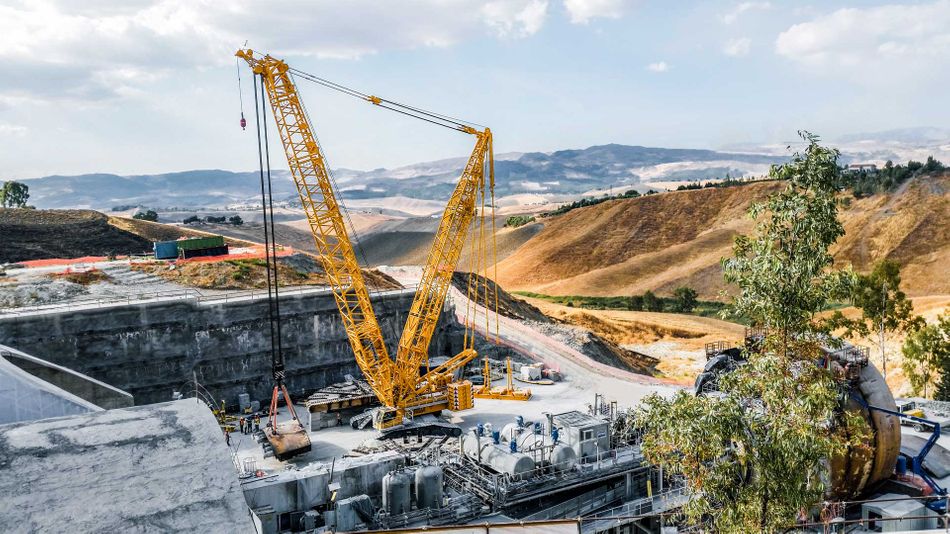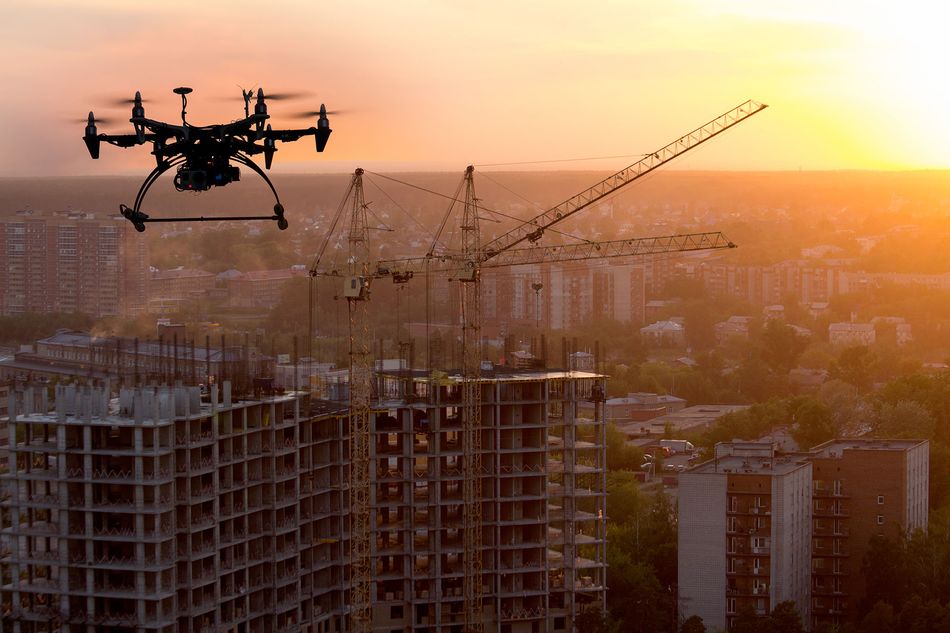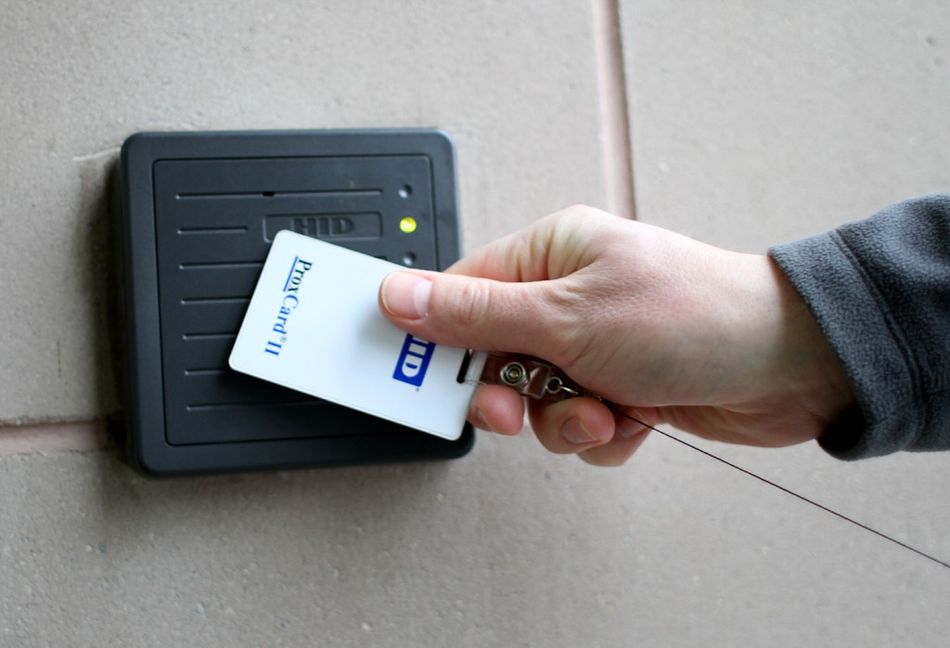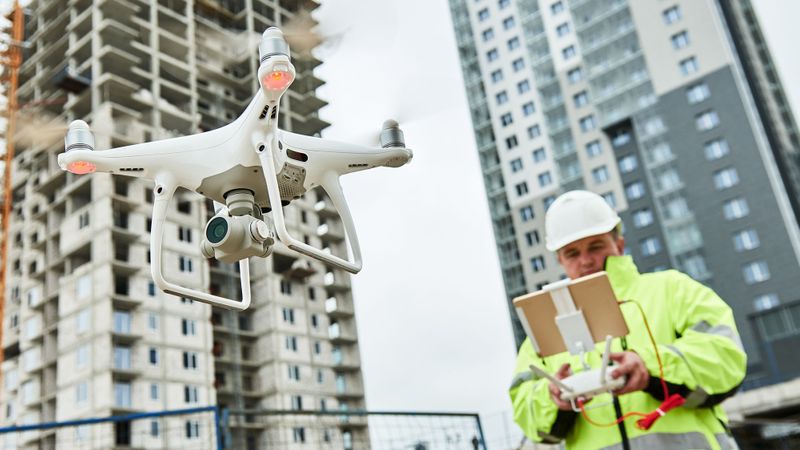Assuring Signal Integrity in a Connected Construction Environment
Article #5 of our Industrial IoT Revolution Series: The most successful device designs for connected construction use components that ensure reliable communications with people and machinery.
This is the fifth article in a 6-part series featuring the connectivity technologies that are enabling the Industrial IoT revolution. The series introduces and explains the applications of wired and wireless connectivity technologies in various industries. This series is sponsored by Mouser Electronics. Through its sponsorship, Mouser Electronics shares its passion for technologies that enable the continued sustainable growth of Industrial IoT.
Introduction
Connectivity technologies such as the ethernet, optic fiber, cellular networks, and wireless radio have made their way to almost all industries today, and construction is no exception. By embracing this digital transformation, it can be ensured that construction-related activities can take place safely, rapidly, efficiently, and reliably.
This article focuses on the applications of connectivity technologies in the construction industry. We explain what these technologies are and how they can be leveraged on-site for carrying out the construction seamlessly. But before we get to that, let’s take a look at a real-life example explaining how connectivity technologies at construction can save the day.
Connectivity on the construction site
Consider a situation where a 2.7 metric ton Air Conditioning (AC) unit needs to be placed on the roof of a one-story building with the help of a crane.
During this operation, the crane operator sitting in a climate-controlled cab watches a flat-screen monitor tracking critical data, such as load on the boom and its extension. Suddenly, the concrete under the crane’s left front outrigger cracks while the AC is suspended over the roof. The monitor shows 77 metric tons of load on that outrigger. But someone verifies that the outrigger is not sinking into the ground.
Even without a direct line of sight to the rooftop area where the load will rest, the crane operator can see the landing zone through a video feed from a boom-mounted camera. The crane is equipped with fail-safe switches that prevent the operator from moving the load in any direction that is beyond the crane’s operational limits.

These switches are controlled by an onboard computer that continuously recalculates limits based on changing load and position sensor data. The operator remains in constant radio contact with a crew on the roof. Other than a crack in the concrete, the AC installation goes forward without a hitch.
This is just one example of how modern construction operations depend on different types of data collected and processed in real-time. Data is rapidly becoming the lifeblood of greater safety, efficiency, and precision at the connected construction site.
Applications of connectivity technologies in connected construction
When it comes to applications of connectivity technologies, imagination is the only limit to what we can hope to have. Out of the numerous possible applications of connectivity at the construction site, here are some of the most prominent ones.
Precision guidance and operation of construction equipment
Bulldozers have sensors built into their buckets to detect their horizontal and vertical positions. These sensors, combined with highly accurate Global Positioning System (GPS) data, are used for precision earth movement and grading on a construction site.
These systems significantly improve efficiency and accuracy by enabling operators to see their location in real-time and set limits on how much of the earth is moved within the site. Similar controls are found in other kinds of excavation equipment.
Even passive equipment, such as dumpsters for construction debris, come equipped with sensors that detect and signal when the bin is full so that it can be hauled off and replaced without interrupting construction operations.
Drones
Before the introduction of drones and other Unmanned Air Vehicles (UAVs) in construction, data was collected manually on foot at the site. This was the only way to monitor and track the progress of the construction. Things have improved a lot since then.

Radio Controlled (RC) drones are used to survey sites and inspect structural elements that would be difficult or dangerous for human inspectors to reach. They operate reliably in a variety of different climatic conditions and stream live video feeds for carrying out observations.
Autonomous vehicles
Some construction sites deploy autonomous vehicles, such as driverless excavation equipment, that can be pre-programmed or remotely operated to perform precision work with fewer human operators. These devices are controlled through cloud-based applications and depend on internet connectivity, GPS data, location data from sensors, and proximity data from cameras. The data coming from all these sources is processed in real-time for collision avoidance and to prevent the equipment from injuring people.
Asset tracking
Inexpensive Radio-Frequency Identification (RFID) tags, which communicate with receivers on a mesh network, help identify and track employees and equipment on a construction site. Receivers log RFID tags every time they pass through specific locations equipped with tag readers, enabling site managers to track tools and monitor the locations of trucks and other construction equipment.

RFID is also used to monitor and schedule the movements of equipment, such as dump trucks loading and unloading between different locations. RFID tag data is captured each time a truck drives by an RFID receiver, and that data is tracked in a database. The technology also helps keep people safe—for example, by triggering alarms if anyone goes near a hazard, such as an open elevator shaft.
Equipment monitoring and predictive maintenance
Control modules continuously read data from various sensors within vehicles. Limits and triggers can be set to notify operators automatically of potential issues. These sensors also enable operators to perform preventative maintenance without impeding construction progress.
Ensuring signal integrity in connected construction
Connected construction uses data for greater safety and efficiency in construction operations. Without that data, employees could be at greater risk, equipment might not operate effectively, and contractors incur increased maintenance costs and even work stoppages. Connected machinery and asset tracking are major factors that enable construction operations to continue round the clock in all but the most extreme weather conditions.
The key to data-intensive operations such as connected construction is reliable data connectivity. If data and signal connectivity are lost, construction stops. Construction sites are harsh environments, however, and that is the challenge for engineers who design electronic construction equipment or control systems that go into construction machinery. Construction sites are unfriendly to electronic components, computers and controllers, radio transmitters and receivers, network gear, surveying and monitoring devices, and all the data-intensive equipment widely used in today’s construction operations.
To ensure data integrity and uninterrupted communications, equipment must be designed with the right connectors for the application. In harsh construction environments, poor connections are the primary cause of communications and data interruptions—the types of interruptions that can halt an operation. Connectivity technologies should come with the following features for smooth operation:
Support for high bandwidth
High bandwidth is important because connected machinery generates enormous amounts of data that real-time control systems must receive, process, and act on. The crane moving a three-ton AC unit to a roof collects and processes data from dozens of sensors critical for precision control of its heavy load while at the same time streaming multiple video feeds. Drones, too, stream video while receiving command and control signals. RF and data connectors used in construction equipment must support high-bandwidth and low-latency connections, especially where timing is critical.
Ruggedized connections and Ingress Protection rating
Construction sites subject electronic components to dust, water, oil, and mechanical stress. To assure data integrity in these environments, connectors should be made with stainless steel or single-piece brass, with appropriate plating for the application. Single-piece connectors can withstand a higher degree of abuse and are a lot less likely to break if they are run over by some construction equipment.

Sealed connections offer protection against dust, moisture, chemicals and prevent foreign materials from shorting or damaging sensitive electronic components. Connectors used in construction should at least be rated with IngressProtection 67 (IP67). Special plating on brass connectors might be required in certain applications, such as connectors on equipment used in marine environments.
Compatibility with widely used standards
Controllers and devices used for precision control of heavy equipment and autonomous vehicles should be ruggedized, with high-bandwidth connections that conform to Fachkreis Automobil (FAKRA) automotive standards. This ensures that they remain compatible with other vehicular systems while maintaining a high degree of protection.
Lightweight and compact
Connectors for RFID receivers, laptop computers, remote measuring equipment, and handheld portable devices should be lightweight, low profile, and weatherproof. Weight is a particular challenge in drones. Connectors for drones should be in miniature and ultra-miniature formats; they should be weatherproof and conform to at least the IP67 standard.
Conclusion
Connected construction only works with good connectivity. The most successful device designs for construction environments use components that ensure consistent, reliable communications. By staying connected, construction operations can maximize personal safety and operational efficiency.
This article was initially published by Mouser and Amphenol in an e-magazine. It has been substantially edited by the Wevolver team and Electrical Engineer Ravi Y Rao. It's the fifth article of a 6-part series that covers the connectivity technologies used in construction. Future articles will introduce readers to some more connectivity technologies enabling the IIoT revolution in various industries.
Article one explained how electrical interconnects are engineered in data centers to deliver high power in a small footprint.
Article two was about the sensing technologies used in Building Automation Systems
Article three analyzed the key trends and challenges for connectivity technologies used in smart manufacturing.
Article four provided an overview of electrical interconnects for harsh environments.
Article five explored the connectivity technologies used at construction sites.
Article six examined the applications and performance parameters of antennas that enable wireless communication.
About the sponsor: Mouser
Mouser Electronics is a worldwide leading authorized distributor of semiconductors and electronic components for over 1,100 manufacturer brands. They specialize in the rapid introduction of new products and technologies for design engineers and buyers. Their extensive product offering includes semiconductors, sensors, interconnects, passives, and electromechanical components.


